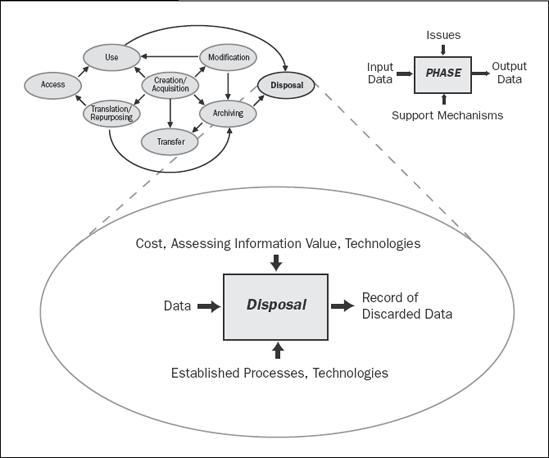4.13. Disposal
The ultimate destiny of information, whether from the scourges of time, short-term benign neglect, or intentional disposal, is destruction. Although all information collected and generated in the course of conducting business may be valuable to someone at some point in the future, from a practical perspective, information with limited future value is discarded to save space and reduce overhead.
The method of identifying what information to save and what to destroy should follow corporate policy as well as governmental rules regarding business records. As illustrated in Exhibit 4.9, the primary issues surround the destruction of information in the disposal phase of the Knowledge Management life cycle are cost, the most appropriate level of security, assessing the value of information, and a variety of enabling technologies.
EXHIBIT 4.9. EXHIBIT 4.9

Throwing away information isn't free, especially if the information must be processed extensively before disposal. For example, the level of security needed at this stage of the KM life cycle can be extremely high, depending on the nature of the information to be discarded. Since this may be the first and only time that information generated within the organization is handled by the public disposal system, the potential for corporate espionage or even accidental discovery exists. For example, simply throwing old servers ...
Get Essentials of Knowledge Management now with the O’Reilly learning platform.
O’Reilly members experience books, live events, courses curated by job role, and more from O’Reilly and nearly 200 top publishers.

